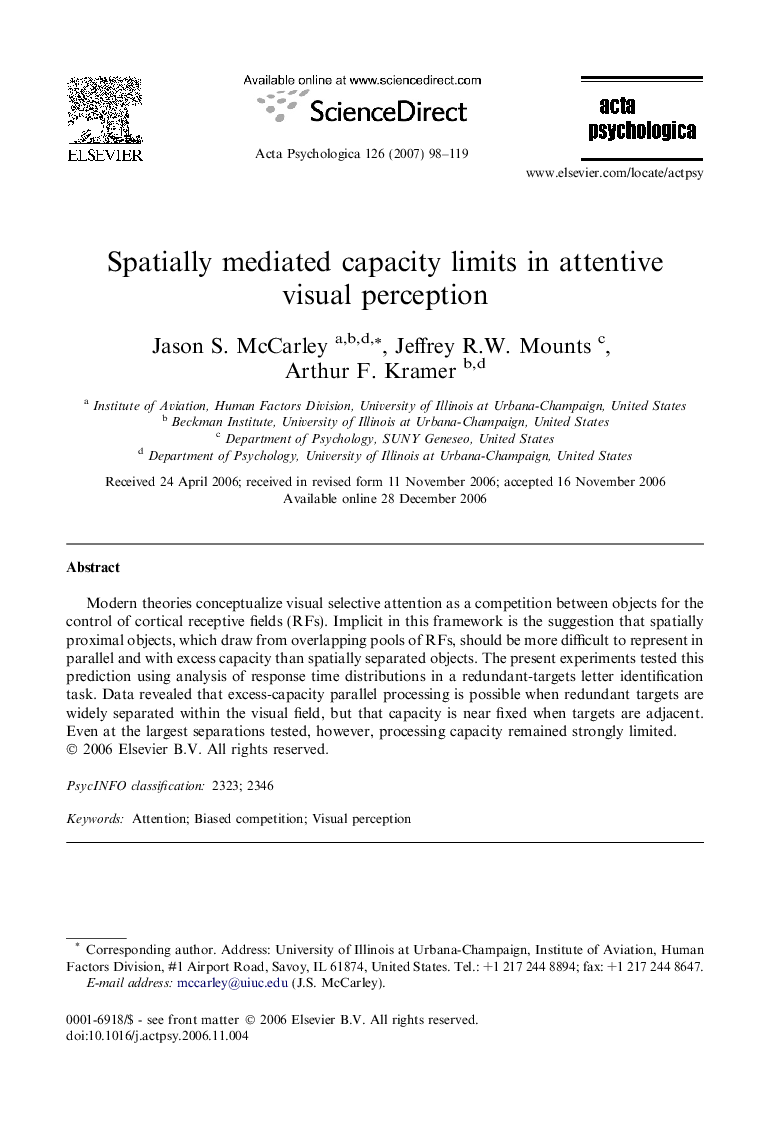| Article ID | Journal | Published Year | Pages | File Type |
|---|---|---|---|---|
| 920597 | Acta Psychologica | 2007 | 22 Pages |
Modern theories conceptualize visual selective attention as a competition between objects for the control of cortical receptive fields (RFs). Implicit in this framework is the suggestion that spatially proximal objects, which draw from overlapping pools of RFs, should be more difficult to represent in parallel and with excess capacity than spatially separated objects. The present experiments tested this prediction using analysis of response time distributions in a redundant-targets letter identification task. Data revealed that excess-capacity parallel processing is possible when redundant targets are widely separated within the visual field, but that capacity is near fixed when targets are adjacent. Even at the largest separations tested, however, processing capacity remained strongly limited.
